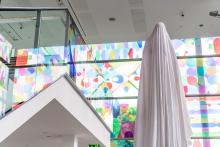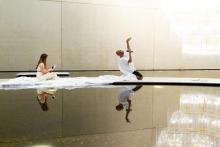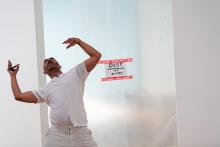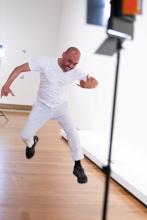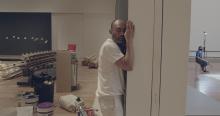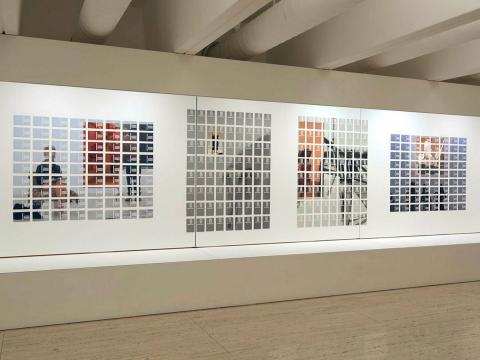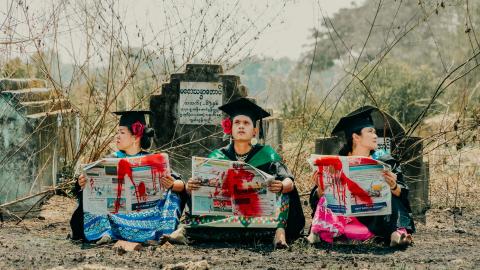Brian Fuata
APT10
Born 1978, Wellington, Aotearoa New Zealand
Lives and works in Brisbane, Australia
The intimate performative work of Brian Fuata is informed by theatre techniques and frameworks of improvisation. Fuata works across a range of sites including theatres, galleries, text messages and email. In each instance, the intent of the work is its engagement with an audience rather than the traditional representation of a pre-existing narrative.
The blank sheet — often understood as a space of ambivalence and absence — is a recurring motif and allegorical symbol, manifesting in different contexts that include emails, paper, SMS, concrete, film and, in the case of his 20-minute live performances, a blank bed sheet. In these ‘ghost’ performances, Fuata re-contextualises the physical space of the gallery into a moving stage of subjectivity and persona.
For APT10, Fuata presents a new trilogy of ‘post-improvisation’ films, documenting three performances created in response to the learning directives of the Open Studio space at the Queensland Art Gallery. These performances connect a personal history of artistic inspiration with selected works and practices encountered within the Gallery’s collections and archives and through the artist’s extended oeuvre.
Explore the work

Found Projector Props (from 'Errantucation (mist opportunities)') 2021
- FUATA, Brian - Artist
- DOREY, Nick - Artist midwife

Repository for an apparitional charlatan (from 'Errantucation (mist opportunities)') 2021
- FUATA, Brian - Artist
- DOREY, Nick - Artist midwife

Errantucation (mist opportunities) 2021
- FUATA, Brian - Artist
- VIRAG, Jeremy - Camera
- AQUILIZAN, Diego - Camera
- McGUIGAN, Matthew - Post-production
- RYAN, Denny - Producer and camera
